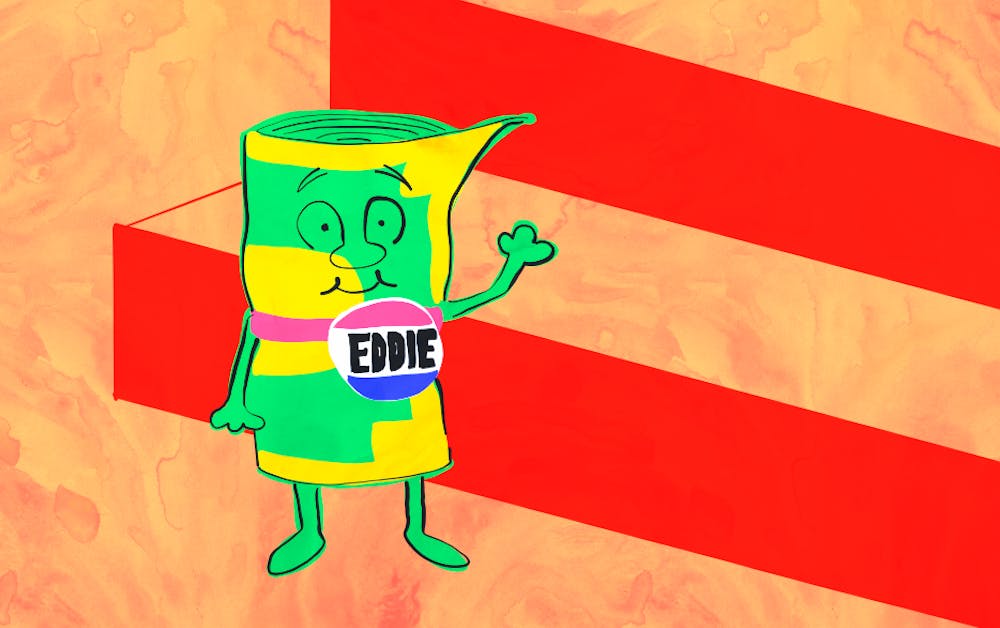Arizona’s education system funding is like "Vanderpump Rules," in that over the years, the more I’ve learned about it, the more confused and frustrated I get. Decisions made in both Bravo's lowest common denominator and our own state's broken education finances can only be met with one question: How can these monstrosities be allowed to run unchecked in 2018?
I’m not even talking about our education system as a whole, which is not top tier. Don’t take my word for it. Education Week’s Quality Counts ranks it at 46th in the country for 2017. US News and World Report scores Pre-K-12 at 48th in the nation, a result so dispiriting that an article about it on KTAR’s website calls the state's 37th-place finish in college readiness among high school grads a "more positive note."
Like I said, I’m not talking about our education system as a whole. I’m talking about the way we fund it.
On the output side, we have a poorly understood school funding formula that gives a set amount of money to each kid based on several factors (Do they speak English as a second language? Are they special needs? Do they live in a rural area?), on top of which the state adds money for capital improvements. Money also comes from district-specific bonds and override measures, which disproportionately help wealthy areas, according to the Arizona Student Achievement Coalition, as do parent-driven donation funds. These are the rules of the game – they may not be fair or ideal, but at least we know concretely what they are.
The input side is more nebulous. In 2017, according to the Arizona State Auditor, the state spent $7.36 billion on K-12 instruction, administration, infrastructure and other miscellaneous costs (per pupil investment in education is still below pre-2008 levels). This doesn’t even include universities, whose state funding has also been slashed in recent years. Thanks to the teacher’s strike, which delivered a 19 percent raise for teachers, and Proposition 123, which was the result of a deal to restore some of the school funding cut during the recession, the budget will finally go up more in future years. But it’s not entirely clear where that money is coming from.
Proposition 123 takes money from a federal land trust designed for future education funding (in essence, taking money set aside for education in the future to pay for education now), a scheme a federal judge found unconstitutional in March. The issue has not been resolved. Governor Doug Ducey’s plan to fund teacher raises rests in large part on rosy economic assumptions about the future. That’s where ballot initiatives come in – the Invest in Ed Act, or Proposition 207, would have increased income taxes on wealthy Arizonans to set aside more money for education.
Because Arizona’s elected leaders have chosen to not adequately plan for education funding, activists want to take the issue directly to the voters. That’s what they did in 2000, with Proposition 301, the ballot proposition that increased sales taxes 0.6 percent to pay for education and which proved so vital to funding that its renewal this year received bipartisan support (according to The Arizona Republic, some Republican support for this was to keep the issue off the ballot this year, which may have driven increased Democratic turnout). That’s what they tried to do in 2012, with the failed Proposition 204, which would have made permanent a temporary 1 percent sales tax increase (opposition to 204 was headed by then-Treasurer Ducey).
And that’s what they wanted to do with Proposition 207. When the legislature and the governor don’t do their jobs, when the people feel that their leaders are overlooking something important, they have the power to make the decisions themselves. That’s why we have initiatives, recalls, and referenda anyway – the progressive framers of the Arizona State Constitution wanted an avenue for direct democracy to be baked in the state’s founding document. But if Arizona school funding is "Vanderpump Rules," then direct ballot measures are "Amish Mafia" – they sound very cool but only end up profoundly disappointing.
While they may have been started to give the people more power, looking at them now yields a different picture. Already, for example, the Arizona Chamber of Commerce and Industry planned to spend nearly a million dollars opposing Prop 207, while teachers unions were going to be forking over a million to support it. Even to get an initiative on the ballot takes a whole lot of money and organization, as you have to get signatures equivalent to 10 percent of the turnout for the last gubernatorial election. This wasn’t much in 1912, but it’s over 150,000 signatures now.
This makes it less an ideal of direct democracy, and more a contest between two wealthy sides battling it out, average Arizona citizens mere spectators to these monied interests. As an even starker example, take Prop 127, which would require Arizona to become at least 50 percent reliable on renewable energy by 2030. The “yes” side is backed, we are told repeatedly by the opposition, by California billionaire Tom Steyer, who has funneled over $8 million for the measure. The “no” side, though, will be receiving at least $11 million in funds from that bastion of the people’s issues, Pinnacle West Corporation (the parent company of everyone’s favorite public monopoly, APS).
And this is when the legislature isn’t actively trying to stifle the initiative process – a law enacted in 2017 that, according to Howard Fischer at Capitol Media Services, would enable the Secretary of State to throw out petition signatures that, say, went over the lines on the paper, or had the wrong type size.
Opponents of 207 didn’t have to resort to those types of challenges, as the Arizona Supreme Court found the initiative unconstitutionally vague. The wording of the measure, according to the justices, misrepresented who would be taxed and how much taxes would increase, largely because they used the word “percent” instead of “percentage.”
The ballot initiative remains important because it’s the only concrete tool we have left beyond “vote the bums out” when politicians aren’t listening to everyday people’s demands. But it too is profoundly hobbled by the fact that only the richest, most well-organized and financed groups can afford to take part.
Reach the columnist at ewmdunn@gmail.com or follow @ewmdunn on Twitter.
Editor’s note: The opinions presented in this column are the authors’ and do not imply any endorsement from The State Press or its editors.
Like The State Press on Facebook and follow @statepress on Twitter.




